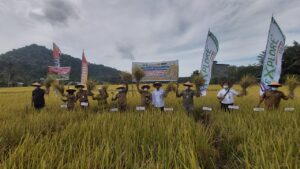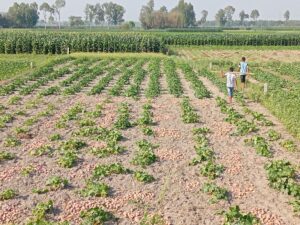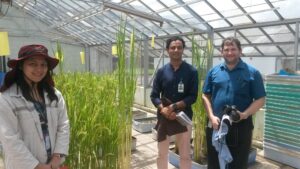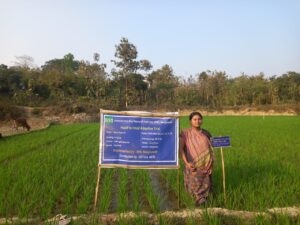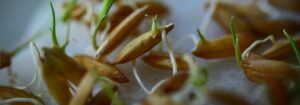
If performed correctly, the practice of planting rice by broadcasting rice seeds directly into unflooded soil offers several advantages over the usual practice of transplanting seedlings into flooded fields. Farmers can save time and labor, less water is required to establish the crop, and dry direct seeded rice suffers less from early season drought. These are important advantages, especially in rainfed rice, and dry direct seeding is gaining popularity in a number of areas across Asia. According to the Thai Office of Agricultural Economics, around 38% of rainfed rice (reliant on rain with no irrigation infrastructure) in northeastern Thailand in 2005 was planted to dry direct seeded rice, and this figure is growing.
The main problem with direct-seeded rice is weed control. Transplanting seedlings gives rice a head start over weeds, and a continuous layer of water suppresses weed growth. In northeastern Thailand, the methods used to control weeds differ from place to place. Some farmers follow official agriculture department recommendations while others develop their own methods.
One of the most promising farmer-initiated controls is rice cutting, a method first studied in 1998 in deep water rice by Thai researcher Tawee Kuptkarnjanakul. Because deep water rice is planted very early in the season, the period before flowering is long, resulting in excess growth of leaves and shoots. Farmers would cut the leaves just above the water surface primarily to use as animal feed.
In northeastern Thailand, rice cutting began around 10 years ago, but not as a result of transfer from deep water rice systems. Early-season drought is a regular occurrence in the region and direct-seeded crops frequently suffer. When this occurs, some farmers give up on their crop, leaving it for their animals to graze. Over the years, farmers have discovered that, when the rains finally resume, the grazed crop recovers well and ends up yielding a reasonable harvest.
After a few years of trial and error, farmers in different areas developed their own rice-cutting methods, which all include cutting down weeds as well as rice early in the season. In some places, cutting is done primarily to reduce weed competition; in others, it is to improve soil fertility. The practice is spreading through farmer-to-farmer communication, media campaigns, and extension workers (the people responsible for technology dissemination). However, farmers’ and researchers’ understanding of the benefits of rice cutting, and the conditions under which it succeeds or fails, is still very limited. Therefore, Thailand’s Ubon Ratchathani Rice Research Center (URRC)—with assistance from the Consortium for Unfavorable Rice Environments (CURE), a group of national and international institutions led by the International Rice Research Institute—has recently conducted farm surveys to study and test this technology.
Farmers who practice rice cutting say that it boosts their rice yields substantially, with some claiming that it also improves soil fertility. They tend to use the method with tall, photosensitive rice varieties—that is, varieties that flower in October independent of the sowing date—including Thailand’s famous jasmine rice. Once the rice crop has been established, it is managed as usual until late July–early August when the rice cutting is conducted. This leaves around 50 days before the development of the panicle (the panicle bears the grain later on). The cutting time is crucial for success. Cut too early and it has no effect on weed and rice growth because the plants are too small. Cut too late and the rice plant may not recover sufficiently to produce a good yield.


